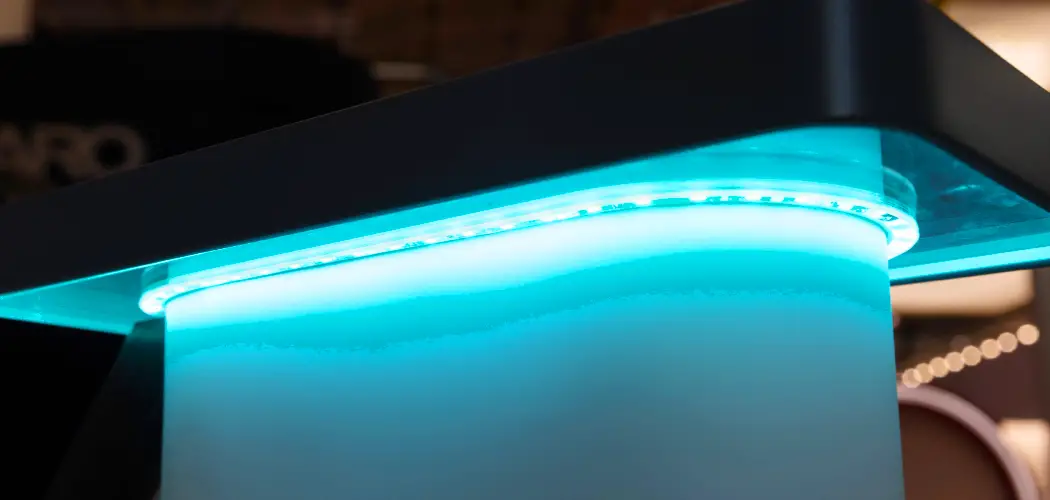LED light-chasing effects have become increasingly popular for their ability to create dynamic and visually stunning lighting displays. The “chasing” effect refers to LED lights turning on and off sequentially, giving the illusion of motion, such as lights “chasing” along a strip. This captivating effect has found widespread use in decorative setups for homes, parties, and events, adding energy and fun to any space.
Whether you’re looking to enhance the ambiance of a room or bring excitement to an outdoor event, chasing LED lights can achieve impressive results. Specific types of LED strips and controllers are required to create these effects. This guide aims to teach readers how to make LED lights chase by exploring pre-programmed controllers and custom DIY methods. By following this article, you’ll gain the confidence to design your own stunning and personalized lighting displays with ease.
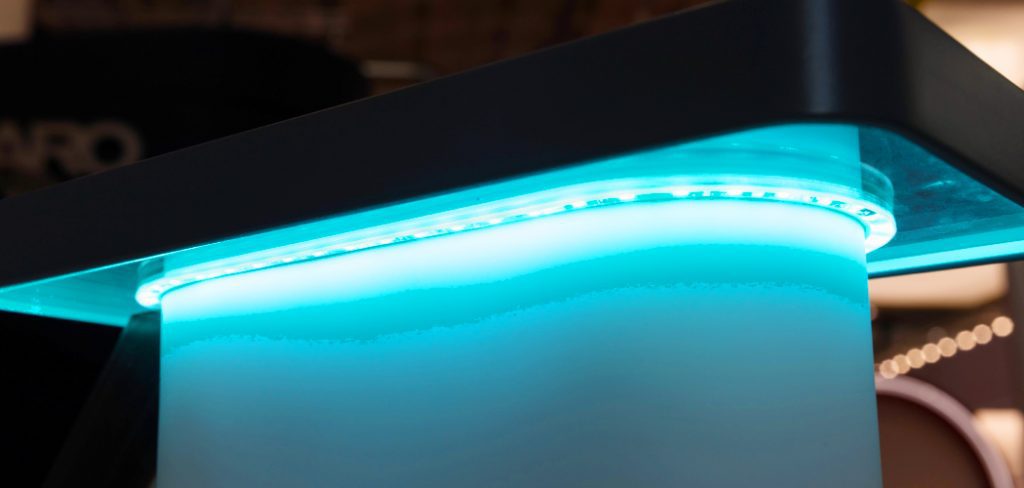
Understanding Chasing LED Lights
What Are Chasing LED Lights?
Chasing LED lights are dynamic lighting setups where LEDs illuminate sequentially, creating the effect of motion along a strip. Unlike static LED lights that emit a constant light or traditional setups with limited pre-set effects, chasing LED lights offer precise and individualized control for each LED. This is made possible by addressable LED strips, where each LED contains a microcontroller. These microcontrollers allow users to program different colors, patterns, and speeds, enabling mesmerizing animated effects like waves, spirals, or chasing movements.
Why Use Chasing Effects?
Chasing effects are perfect for elevating any lighting display by introducing motion and energy. They provide eye-catching, dynamic patterns that bring life to spaces, making them ideal for parties, events, and home décor. The versatility of chasing LEDs means they can easily sync with music beats for immersive experiences, often used in stage lighting or synchronized decorations. These lights can transform a plain setting into one with ambiance and excitement, adding a creative touch to any environment.
Required Components
To create chasing LED effects, you’ll need the following components:
- Addressable LED strips (e.g., WS2812B or SK6812 models)
- A compatible LED controller (e.g., Arduino, Raspberry Pi, or pre-made controllers)
- A power supply tailored to the LED strip’s specifications
- Optional software or apps for advanced pattern customization
Choosing the Right LED Strips and Controllers
Addressable LED Strips
Addressable LED strips, such as WS2812B or SK6812 models, are essential for creating chasing effects due to their ability to control each LED individually. This feature allows for precise programming of dynamic patterns like waves, pulsating lights, or synchronized animations. Unlike standard LED strips, addressable ones provide unmatched flexibility in design and customization, making them ideal for both simple and intricate lighting projects. Whether you’re designing ambient room lighting or a dramatic stage display, addressable LED strips are the foundation for achieving vibrant, flowing effects.
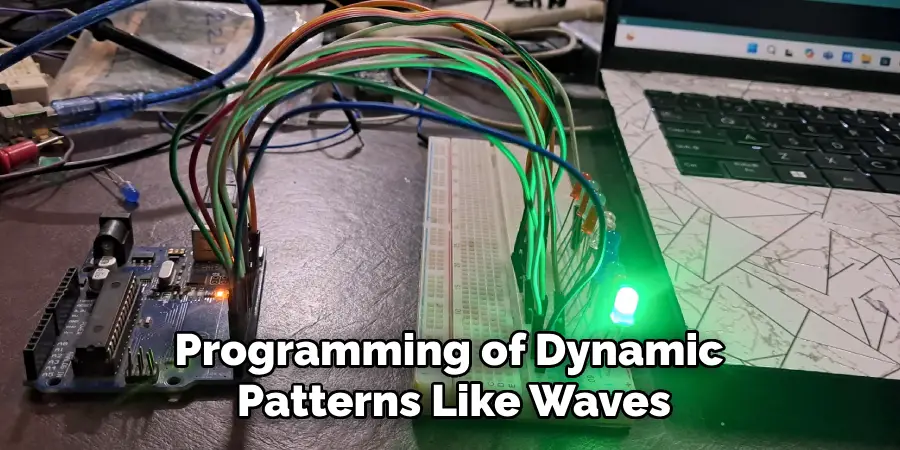
Controllers for Chasing Effects
Choosing the right controller is crucial for leveraging the full potential of addressable LED strips. Pre-programmed options like SP110E or SP108E are user-friendly and come with built-in modes for immediate use. At the same time, programmable controllers such as Arduino or Raspberry Pi allow for greater customization and creativity. When selecting a controller, look for features like app compatibility for easy adjustments, music sync capabilities for immersive displays, and access to pre-set patterns for convenience. These features simplify the process of creating intricate designs and dynamic effects, ensuring your chasing LED setup performs seamlessly.
Compatibility
To ensure smooth operation, verifying compatibility between your chosen LED strips, controllers, and power supplies is vital. Mismatched components can lead to performance issues or damage to your system. Always check voltage requirements, connector types, and software support when assembling your chasing LED setup to achieve reliable and visually stunning results.
How to Make LED Lights Chase: Setting Up Chasing LED Lights
Connecting the Components
To begin, gather your LED strip, controller, and power supply, ensuring all components are compatible. Start by connecting the LED strip to the controller. Most LED strips have three main inputs: data, ground, and power. Use the data wire to link the strip to the “DATA” or “DIN” port on the controller. Next, connect the ground wire to the controller’s “GND” port, ensuring a secure connection. For power, link the LED strip’s power wire to the “+5V” or corresponding voltage input on the controller. Finally, attach the controller to the power supply, matching the voltage and amperage requirements of the system. Be mindful of proper polarity and connector types to avoid damaging your components.
Programming or Selecting Chasing Effects
Once your hardware is connected, select or program your chasing effect. With app-compatible controllers, open the companion app and browse pre-set light patterns, adjusting speed and brightness as desired. For programmable controllers like Arduino, use software like the Arduino IDE to upload pre-configured files or write custom code for chasing effects. Tools like FastLED or WLED libraries are excellent resources for designing and customizing effects for your setup. Save your preferences and ensure the settings reflect the effect you want before testing.
Testing the Setup
Before finalizing, power up the system and test it to verify proper functionality. Observe each section of the LED strip to ensure the lights respond as programmed. For troubleshooting, confirm all connections are secure, verify the voltage matches the LED strip’s specifications, and ensure the data wire is correctly attached. Address common issues like reversing polarity or loose wiring to maintain a functional, vibrant chasing effect. Once satisfied, your chasing LED lights are ready to create stunning displays!
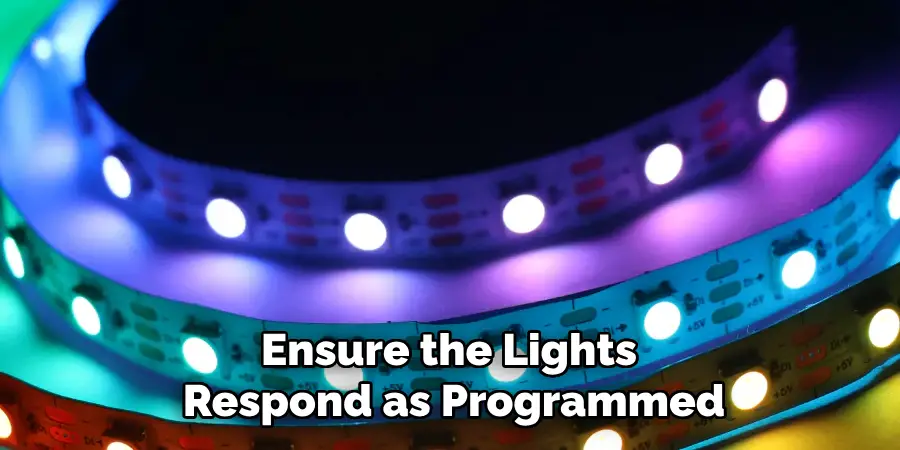
Customizing the Chasing Effect
Using Apps and Software
To customize your chasing LED effects, apps like LEDHue, Magic Home, or dedicated software like WLED are excellent tools. These platforms provide intuitive interfaces to adjust speed, color, and pattern options with just a few taps. Begin by connecting your LED controller to the app via Wi-Fi or Bluetooth. Once synced, browse available presets or create a custom sequence by selecting your preferred colors and adjusting their order. Use speed sliders to set how quickly the lights transition between patterns. For ultimate versatility, desktop software like the Arduino IDE allows users to upload pre-coded sequences or write custom programs, providing more profound control. Tools like FastLED, WLED, or Adafruit NeoPixel libraries offer extensive resources for designing unique effects.
Syncing with Music
For a more dynamic visual experience, consider syncing your LED lights with music. Apps like Magic Home or controllers with sound-reactive modes detect audio signals and adjust lighting patterns accordingly. Choose controllers with built-in microphones or pair your setup with software that processes audio through a linked device. Platforms such as WLED even feature music-responsive options that enhance the chasing effect by matching beats and rhythms. This setup creates immersive displays perfect for parties or ambient home décor.
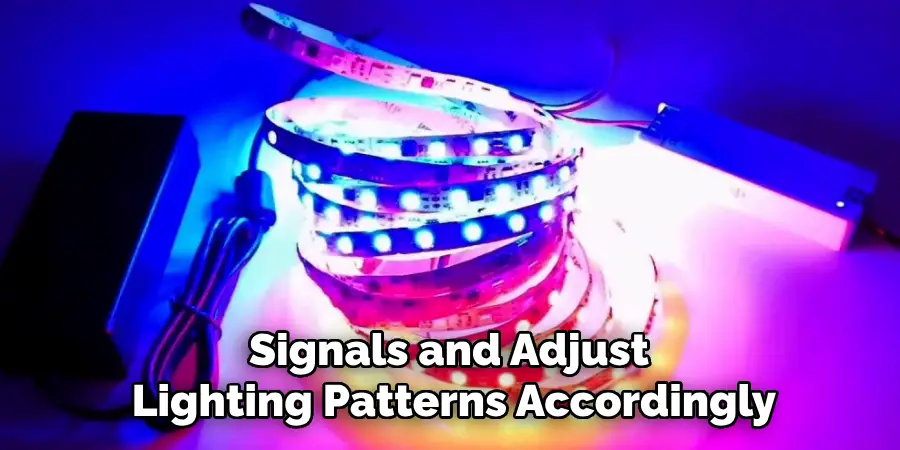
Advanced Customizations
For advanced users, coding provides unlimited possibilities to create personalized effects. Programming environments like Arduino or Python enable granular control, from defining LED animations to incorporating interactive elements. Use libraries such as FastLED or Adafruit NeoPixel to simplify complex programming tasks and unlock unique features. Experiment with custom sequences, blending animations, or even integrating sensors to take your chasing LED lights to the next level.
Troubleshooting Common Issues
Power Supply Problems
Voltage drop is a common problem with longer LED strips, causing dimming or uneven brightness. To avoid this, ensure you use a power supply with adequate wattage to match the total requirement of your LED strip. Plan to add power injection points along the strip for strips exceeding a certain length. These additional power sources help maintain consistent voltage delivery and prevent performance issues, especially in setups exceeding 5 meters.
Connection Issues
Secure and proper connections are critical for your LED strip’s performance. Make sure that the data, ground, and power wires are firmly attached and free of damage. Addressable LED strips require care in aligning the data wire direction—always connect the controller’s data output to the input marked on the LED strip. Incorrect wiring or loose connections can lead to flickering, unresponsiveness, or severe failures. Double-checking your wiring layout can easily save hours of troubleshooting.
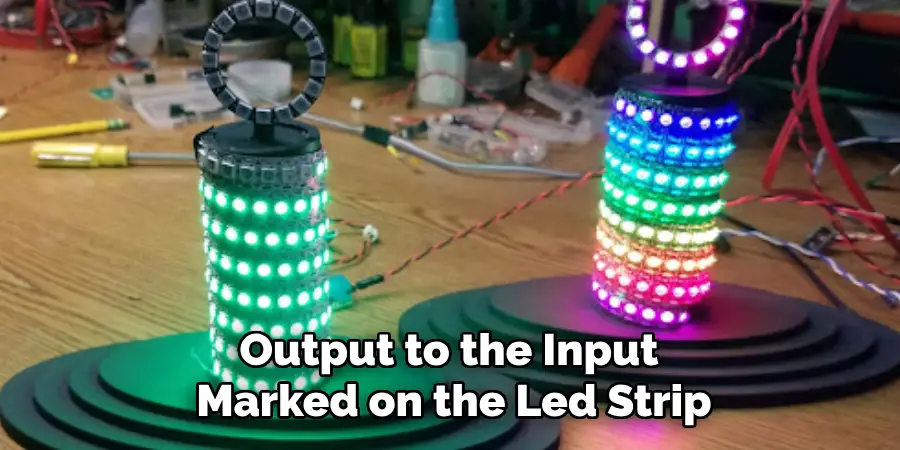
Software or App Malfunctions
Malfunctions in connected software or apps can disrupt your LED setup. To address these, start by updating the firmware on your controller or LED device. Outdated software often causes connectivity problems. If the issue persists, try re-pairing the device with the app, ensuring you follow pairing instructions precisely. Additionally, clearing the app cache or reinstalling the software can often resolve stubborn bugs and restore functionality.
Applications of Chasing LED Lights
Decorative Uses
Chasing LED lights can transform home décor into a vibrant and dynamic visual experience. These versatile lights are perfect for enhancing holiday decorations, adding sparkle to Christmas setups, or creating spooky effects for Halloween. They can also accentuate special occasions like birthdays or dinner parties with customizable patterns and colors, setting the mood and making the celebration memorable.
Event Lighting
For events such as parties, weddings, or stage performances, chasing LED lights creates captivating lighting effects that amplify the atmosphere. Their ability to produce flowing patterns and movement makes them ideal for dance floors, wedding arches, or concert stages, ensuring the lighting complements the event’s energy. With programmable options, they are highly adaptable to match event themes or specific color schemes.
DIY Projects
Chasing LED lights opens up endless possibilities for creative DIY projects. From building animated signs and gaming setups to designing custom artistic installations, these lights can bring ideas to life with dynamic motion and customizable effects. Hobbyists can create personalized light patterns that reflect their unique style and vision, making every project one-of-a-kind.
Commercial Applications
Chasing LED lights are widely employed in commercial spaces to grab attention and enhance visual appeal. They are a favorite choice for advertising displays, store windows, and signage due to their eye-catching movement and brightness. Additionally, architects and designers often use these lights to illuminate building façades or to add dynamic lighting effects in modern interiors, creating a distinctive and professional look.
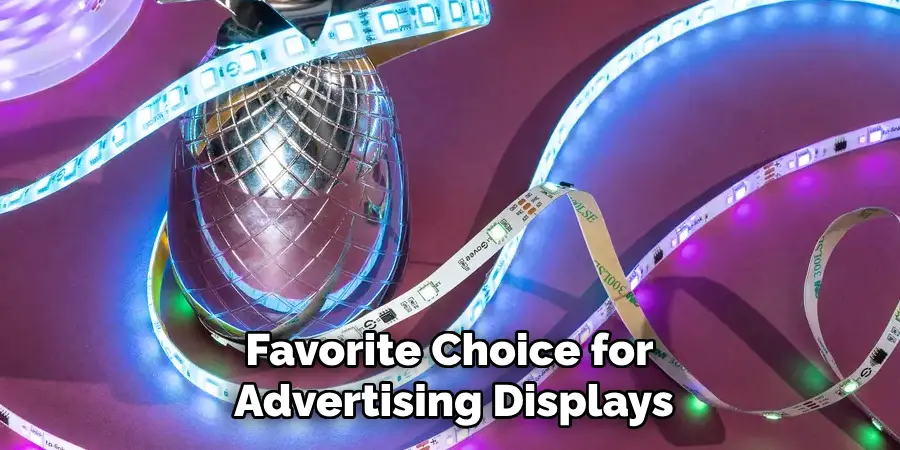
Tips for Maximizing the Chasing Effect
Optimal Placement
To achieve the best results, position-chasing LED strips in areas where their dynamic motion can be fully appreciated. Ideal locations include along walls, ceilings, furniture edges, or under cabinets. These placements ensure that the light patterns catch the eye and enhance the space’s ambiance.
Combining Effects
Experimenting with different modes can elevate the visual experience. Consider combining the chasing effect with complementary modes, such as fades or strobes, to create unique patterns and transitions. This adds variety and excitement, keeping the display lively and engaging.
Maintenance
Regular maintenance is key to sustaining the performance of your chasing LED lights. Keep the LED strips clean and free from dust to maintain optimal brightness. Additionally, check connections and power supplies periodically to ensure everything functions smoothly. This will help extend the lifespan of your lighting system and preserve its vibrant effects.
Conclusion
Creating chasing effects with LED lights involves a simple yet rewarding process. Select the right components, including high-quality LED strips, compatible controllers, and power supplies. Follow proper installation practices to position the lights in areas where their dynamic motion will shine. By learning how to make LED lights chase, you unlock endless customization options to tailor the patterns and transitions to your liking. These versatile lights enhance home decor, events, or creative projects. Experiment with various settings to achieve stunning visual effects and make the most of your LED lighting setup.

